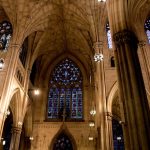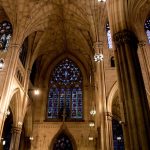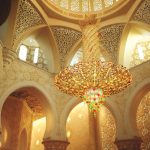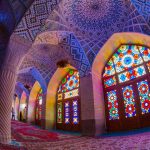Download links
How to install 8k8 Manila Cathedral: A Historic Gem in the Philippines APK?
1. Tap the downloaded 8k8 Manila Cathedral: A Historic Gem in the Philippines APK file.
2. Touch install.
3. Follow the steps on the screen.
Description
The Manila Cathedral, officially known as the Cathedral-Basilica of the Immaculate Conception, has a rich and storied history that dates back to the 16th century. The original structure was built in 1581, making it one of the oldest churches in the Philippines. The cathedral was established shortly after the Spanish colonization of the archipelago, serving as the seat of the Archdiocese of Manila.
Over the centuries, it has undergone numerous reconstructions and renovations due to natural disasters, including earthquakes and fires, which have plagued the region. The first structure was made of bamboo and nipa palm, reflecting the indigenous building techniques of the time. As the city of Manila grew and evolved, so too did the cathedral.
The first stone structure was completed in 1592, but it was not until 1626 that it was consecrated. The cathedral has been rebuilt several times, with significant reconstructions occurring in 1850, 1880, and again in 1958 after being severely damaged during World War
Key Takeaways
- Manila Cathedral was first established in 1571 by Spanish conquistador Miguel Lopez de Legazpi
- The cathedral has undergone several reconstructions due to natural disasters and war damage
- The current architectural style of the cathedral is a combination of Neo-Romanesque and Neo-Byzantine influences
- Manila Cathedral has played a significant role in the country’s history, hosting important events such as the visit of Pope John Paul II in 1981
- The recent restoration and renovation of Manila Cathedral aimed to preserve its historical and cultural significance
- Manila Cathedral is not only a religious site but also a popular tourist destination, attracting visitors with its rich history and stunning architecture
Architectural Features of Manila Cathedral
The architectural design of Manila Cathedral is a harmonious blend of various styles, primarily influenced by Romanesque and Gothic elements. The most striking feature is its grand façade, characterized by a series of arches and intricate carvings that depict biblical scenes and saints. The cathedral’s entrance is framed by a large rose window, which allows natural light to filter into the interior, creating a serene atmosphere for worshippers.
The use of local materials, such as adobe bricks and coral stones, not only adds to its aesthetic appeal but also connects the structure to its geographical context. Inside, the cathedral boasts a high vaulted ceiling supported by massive columns that create an expansive sense of space. The altar is adorned with exquisite religious art, including a stunning retablo that showcases various saints and religious figures.
The stained glass windows are another highlight, depicting scenes from the life of Christ and other significant events in Catholic tradition. These windows not only serve a decorative purpose but also tell stories that resonate with the faithful. The overall layout of the cathedral follows a traditional cruciform plan, emphasizing its role as a place of worship and community gathering.
Importance of Manila Cathedral in Philippine History
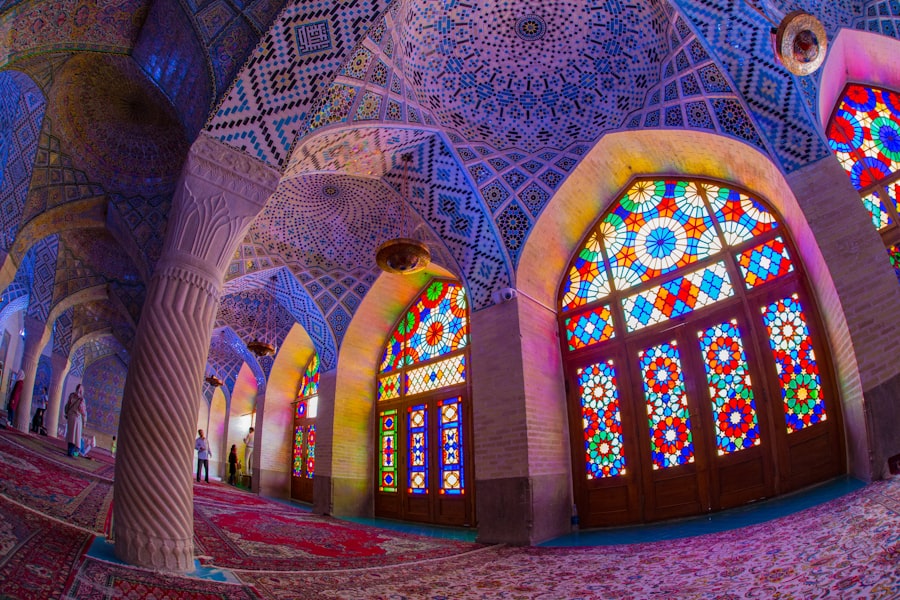
Manila Cathedral holds a significant place in Philippine history as a symbol of both colonial influence and national identity. As the seat of the Archdiocese of Manila, it has been at the center of religious life in the Philippines for centuries. The cathedral has witnessed pivotal moments in Philippine history, including the arrival of Spanish colonizers, the spread of Christianity, and the eventual struggle for independence from colonial rule.
It served as a venue for important events such as the consecration of bishops and archbishops, as well as significant national celebrations. Moreover, Manila Cathedral has been a site for political gatherings and movements throughout history.
The church’s role extended beyond spiritual guidance; it became a symbol of hope and resilience for Filipinos seeking freedom from oppression. In contemporary times, it continues to be a site for social justice advocacy and community support, reflecting its enduring relevance in Philippine society.
Restoration and Renovation of Manila Cathedral
| Year | Restoration Phase | Investment | Duration |
|---|---|---|---|
| 1954-1958 | First Restoration | Unknown | 4 years |
| 2012-2014 | Second Restoration | PHP 128 million | 2 years |
| 2019-2021 | Third Restoration | PHP 190 million | 2 years |
The restoration and renovation of Manila Cathedral have been ongoing processes aimed at preserving its historical integrity while adapting to modern needs. After being heavily damaged during World War II, significant efforts were made to restore the cathedral to its former glory. The reconstruction was led by architect Fernando Ocampo, who incorporated modern techniques while respecting traditional designs.
This careful balance ensured that the cathedral retained its historical significance while becoming more resilient to future disasters.
The installation of modern lighting systems has illuminated the intricate details of the architecture, allowing visitors to appreciate its beauty even at night.
Additionally, efforts have been made to restore artworks and religious artifacts within the cathedral, ensuring that they are preserved for future generations. These restoration projects not only aim to maintain the physical structure but also seek to revitalize the spiritual atmosphere that has drawn countless visitors over the years.
Cultural Significance of Manila Cathedral
Embodiment of Cultural Fusion
As one of the most important religious sites in the country, it embodies the fusion of indigenous Filipino culture with Spanish colonial influences. This blend is evident in various aspects of church life, from traditional religious practices to local festivals celebrated within its walls.
A Hub for Community and Faith
The cathedral is often a focal point during major religious events such as Christmas and Holy Week, drawing thousands of devotees who participate in rituals that have been passed down through generations. Furthermore, Manila Cathedral plays a crucial role in fostering community ties among Filipinos. It serves as a gathering place for families and individuals seeking solace and connection through shared faith.
A Living Institution of Spiritual Devotion and Social Responsibility
The cathedral’s involvement in social issues—such as poverty alleviation and disaster response—highlights its commitment to serving not just as a place of worship but also as an active participant in societal development. This dual role enhances its cultural significance, making it a living institution that reflects both spiritual devotion and social responsibility.
Manila Cathedral as a Tourist Destination

As one of Manila’s most iconic landmarks, Manila Cathedral attracts tourists from around the world who come to admire its architectural grandeur and historical significance. Visitors are often struck by the cathedral’s impressive façade and intricate details that tell stories of faith and resilience. Guided tours provide insights into its rich history, allowing tourists to appreciate not only its beauty but also its role in shaping Philippine culture and identity.
In addition to its architectural allure, Manila Cathedral offers visitors an opportunity to engage with local traditions and practices. Tourists can witness religious ceremonies or participate in mass services, providing a unique glimpse into Filipino spirituality. The surrounding area of Intramuros also enhances the experience; visitors can explore nearby historical sites such as Fort Santiago and San Agustin Church, creating a comprehensive understanding of Manila’s colonial past.
As such, Manila Cathedral stands not only as a religious site but also as a cultural hub that enriches the experience of those who visit it.
If you enjoyed reading about the stunning visuals of 8k8 Manila Cathedral, you may also be interested in checking out this related article on 8k8.mom titled 8k8 Laro: Sensasi Bermain Game dengan Kualitas Visual Terbaik. This article explores the thrill of playing games with the best visual quality, which is sure to captivate your senses just like the beauty of Manila Cathedral in 8k8.
FAQs
What is the 8k8 Manila Cathedral?
The 8k8 Manila Cathedral is an article about the historical and architectural significance of the Manila Cathedral, a prominent landmark in the Philippines.
Where is the Manila Cathedral located?
The Manila Cathedral is located in the Intramuros district of Manila, the capital city of the Philippines.
What is the significance of the Manila Cathedral?
The Manila Cathedral holds great historical and religious significance as it has been the seat of the Archbishop of Manila for centuries and has witnessed numerous important events in Philippine history.
What is the architectural style of the Manila Cathedral?
The Manila Cathedral features a combination of architectural styles, including Baroque, Neo-Romanesque, and Neo-Byzantine elements, reflecting its rich history and the various renovations it has undergone.
Is the Manila Cathedral open to the public?
Yes, the Manila Cathedral is open to the public for worship, tours, and special events. Visitors are welcome to explore its stunning architecture and learn about its history.
Can visitors attend religious services at the Manila Cathedral?
Yes, the Manila Cathedral holds regular religious services, including Mass and other ceremonies, which are open to the public.
Is the Manila Cathedral a popular tourist attraction?
Yes, the Manila Cathedral is a popular tourist attraction due to its historical significance, architectural beauty, and central location within the Intramuros district.
Are there any restrictions for visitors at the Manila Cathedral?
Visitors are expected to dress modestly and respectfully when visiting the Manila Cathedral, and photography may be restricted during religious services or in certain areas of the cathedral.


